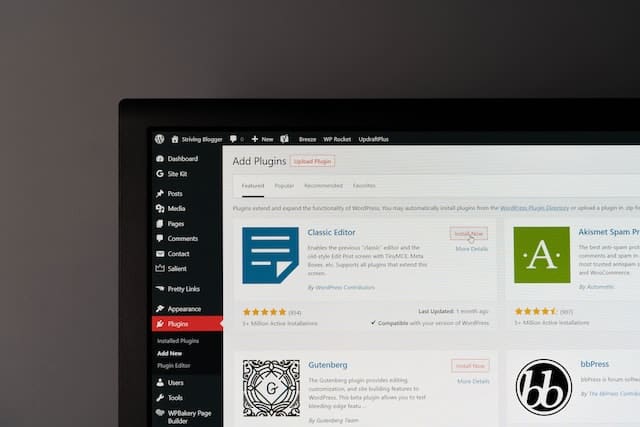How to Create a 90-Day Blog Content Calendar (with Free Templates)

Creating a blog content calendar is an essential part of any content strategy. It allows you to plan and organize your blog posts in advance, ensuring that you always have fresh content to share with your audience.
Whether you’re a seasoned blogger or just starting out, a content calendar can help you stay on track and achieve your goals.
In this guide, we’ll show you how to create a 90-day blog content calendar. A 90-day calendar is a great starting point because it’s long enough to plan out a substantial amount of content but not so long that it becomes overwhelming.
We’ll walk you through the process step-by-step, from conducting keyword research to brainstorming ideas and scheduling your posts. By the end of this guide, you’ll have a clear plan for the next three months of your blog content.
Understanding the Importance of a Content Calendar
Creating a 90-day blog content calendar is an essential part of any successful content marketing strategy. A content calendar is a schedule that outlines the content you’ll be publishing on your blog over a set period of time.
It’s a plan that helps you stay consistent and organized while providing clarity on what you need to do to achieve your goals.
Defining a Content Calendar
A content calendar is a tool that helps you plan and organize your content marketing efforts. It’s a schedule that outlines the content you’ll be publishing on your blog, social media, and other channels.
A content calendar can be as simple or as complex as you need it to be. It can include details such as the title of the blog post, the author, the target audience, the keywords, the publication date, and the promotion plan.
Benefits of a 90-Day Content Calendar
There are several benefits to creating a 90-day content calendar for your blog. Here are a few:
- Consistency: A content calendar helps you stay consistent with your publishing schedule. By planning ahead, you can ensure that you’re publishing content on a regular basis, which is essential for building an engaged audience.
- Clarity: A content calendar provides clarity on what you need to do to achieve your goals. It helps you stay focused and organized, which can reduce overwhelm and increase productivity.
- Content Marketing Strategy: A content calendar is an essential part of your content marketing strategy. It helps you align your content with your business goals and target audience.
By creating a 90-day content calendar, you can ensure that you’re publishing high-quality content on a regular basis. It provides clarity on what you need to do to achieve your goals and helps you stay consistent with your publishing schedule.
Setting Up Your 90-Day Blog Content Calendar
When it comes to creating a 90-day blog content calendar, the first step is to choose the right tool.
There are various tools available such as Google Calendar, spreadsheets, Trello, Asana, and Notion. You can choose the tool that works best for you depending on your preferences, needs, and budget.
Choosing the Right Calendar Tool
Google Calendar is a popular choice for many bloggers because it is free, easy to use, and can be accessed from anywhere. You can create different calendars for different topics, and color-code them for easy identification.
Spreadsheets are also a great option for bloggers who prefer a more structured approach. You can create a table with columns for the date, blog post title, keywords, and status.
Trello, Asana, and Notion are other great tools that offer customizable dashboards and columns for organizing your content.
Structuring Your Calendar
Once you have chosen your calendar tool, the next step is to structure your calendar.
You can create a template for your content calendar that includes important details such as the date, blog post title, keywords, and status. This will help you stay organized and ensure that you are posting consistently.
You can also add notes or comments to each post to keep track of your ideas and progress.
Customizing Your Calendar Layout
Customizing your calendar layout is an important step that will help you stay motivated and focused.
You can add images, colors, and other visual elements to make your calendar more appealing and engaging. You can also customize your calendar to fit your personal style and preferences.
For example, you can use different fonts, backgrounds, and themes to make your calendar more unique.
Content Ideation and Planning
To create a successful 90-day blog content calendar, you need to start with content ideation and planning. This is the stage where you brainstorm content ideas, conduct keyword research, and align your content with your marketing strategy. Here are some tips to help you get started.
Conducting Keyword Research
Keyword research is an essential part of content ideation and planning. It helps you identify the topics and keywords that your target audience is searching for.
Use keyword research tools such as Google Keyword Planner, Ahrefs, or SEMrush to find keywords with high search volume and low competition.
Once you have a list of keywords, use them to come up with content ideas.
Brainstorming Content Topics
Brainstorming is the process of generating ideas through group discussion or individual thinking. When brainstorming content topics, consider the following:
- What are the pain points of your target audience?
- What questions are they asking?
- What topics are trending in your industry?
- What are your competitors writing about?
Use mind maps, lists, or tables to organize your ideas and come up with a list of potential topics.
Aligning Content with Marketing Strategy
Your blog content should align with your marketing strategy. This means that your content should support your business goals, target your ideal customers, and reflect your brand values.
When planning your blog content, consider the following:
- What are your business goals?
- Who is your target audience?
- What is your brand voice and tone?
- What are your content pillars?
By aligning your content with your marketing strategy, you can create a cohesive content plan that resonates with your target audience and drives business results.
Organizing and Scheduling Content
Creating a 90-day blog content calendar can be daunting, but organizing and scheduling content can make it much easier. Here are some tips to help you stay on track:
Setting Publication Dates
Schedule a specific date and time for each blog post to go live. This will help you stay on top of your publishing schedule and ensure that your readers know when to expect new content.
You can use a spreadsheet or a project management tool to keep track of your publication dates.
Planning for Events and Holidays
Events and holidays can be great opportunities to create timely and relevant content. Make sure to plan ahead and incorporate them into your content calendar.
You can create a table or a list to keep track of upcoming events and holidays, and brainstorm ideas for blog posts that tie in with them.
Incorporating Social Media and Email Marketing
Your blog content calendar doesn’t have to be limited to blog posts. You can also use it to plan your social media posts and email marketing campaigns.
Make sure to include social media and email marketing in your content calendar, and schedule them around your blog posts to create a cohesive content strategy.
Workflow and Content Creation
Creating a blog content calendar is not just about scheduling posts. It involves establishing an effective writing and editing process, managing content production, and tracking progress and status. Here are some tips to help you streamline your workflow and create high-quality content.
Establishing a Writing and Editing Process
To create a successful content calendar, you need to establish a clear writing and editing process.
This process should include defining the roles and responsibilities of your team, setting deadlines, and creating a style guide. You should also establish a review process to ensure the quality of your content.
Managing Content Production
Managing content production involves creating a plan for content creation, setting deadlines, and assigning tasks to team members.
You should also establish a system for tracking progress and ensuring that all content is completed on time.
One effective way to manage content production is to use a project management tool like Trello or Asana. These tools allow you to create boards or lists for each stage of the content creation process, assign tasks to team members, and track progress.
Tracking Progress and Status
Tracking progress and status is essential to ensure that your content calendar stays on track.
You should create a system for tracking the progress of each piece of content, including the status of drafts, edits, and revisions. You should also establish a system for tracking the performance of your content, including metrics like page views, engagement, and shares.
One effective way to track progress and status is to use a spreadsheet or project management tool. This allows you to create a centralized location for tracking all aspects of your content calendar, including deadlines, progress, and performance metrics.
Collaboration and Management
When creating a 90-day blog content calendar, collaboration and management are crucial elements that can help ensure the success of your content strategy. In this section, we’ll explore some of the best practices for assigning roles and responsibilities, using project management systems, and ensuring quality and approval.
Assigning Roles and Responsibilities
Assigning roles and responsibilities is an essential step in the content creation process. It can help ensure that everyone involved in the project knows their responsibilities and what is expected of them.
To make the process of assigning roles and responsibilities easier, you can create a table that outlines each person’s role, their responsibilities, and their deadlines.
Using Project Management Systems
Using a project management system can help you keep track of your content creation process and ensure that everything is on track.
There are many project management tools available, such as Asana, Trello, and Coschedule. These tools can help you assign tasks, set deadlines, and track progress.
Additionally, you can use communication tools like Slack to ensure that everyone is on the same page.
Ensuring Quality and Approval
Ensuring quality and approval is another critical aspect of the content creation process.
Before publishing your content, you should have a process in place to ensure that it meets your standards and has been approved by the appropriate stakeholders.
This can include having a checklist of items that need to be reviewed, including grammar, spelling, and formatting.
Optimizing and Repurposing Content
Creating a 90-day content calendar is not just about coming up with fresh ideas but also about optimizing and repurposing your existing content. Here are some tips on how to do that effectively.
Enhancing SEO and Engagement
One of the benefits of repurposing content is that it can help improve your search engine optimization (SEO) and engagement.
By revisiting old blog posts and updating them with new information, relevant keywords, and better visuals, you can boost their visibility on search engines and attract more traffic to your website.
Another way to enhance engagement is to identify your most popular blog posts and create new content pieces that build on them.
For instance, you can turn a popular blog post into a video, infographic, or podcast episode and share it on different platforms to reach a wider audience.
Repurposing Content Across Platforms
Repurposing content is not just about updating old blog posts. It’s also about adapting them for different platforms.
For example, you can turn a long-form blog post into a series of social media posts. Or, you can turn a podcast episode into a blog post. You can also turn a webinar into a video tutorial.
When repurposing content, it’s essential to consider the platform’s format and audience. Each platform has its own rules, limitations, and preferences. So, you need to tailor your content accordingly.
For instance, Instagram favors visual content, while LinkedIn is more business-oriented.
Measuring Success and Making Adjustments
To ensure that your repurposed content is effective, you need to measure its success and make adjustments as needed.
Use analytics tools to track your content’s performance on different platforms. These tools can track likes, shares, comments, and click-through rates.
Based on the data, you can identify what types of content resonate with your audience and what needs improvement.
For instance, if your blog posts get more engagement than your videos, you can focus on creating more blog posts and optimizing them for SEO.
Conclusion
Creating a 90-day blog content calendar can be a daunting task, but it is an essential step in ensuring that your blog stays organized and on track.
By following the steps outlined in this guide, you can create a content calendar that works for you and your blog.
Remember that a content calendar is just one part of your overall content strategy. It is important to regularly reflect on your content and make adjustments as needed.
Use your content calendar as a tool for future planning, but don’t be afraid to make changes if something isn’t working.
When creating your content calendar, consider the different types of content you want to create, such as blog posts, videos, or social media posts.
Use a table or list to organize your ideas and ensure that you are covering a variety of topics.
Be sure to include important dates, such as holidays or product launches, in your content calendar.
This will help you plan ahead and ensure that you are creating content that is timely and relevant.
Overall, creating a 90-day blog content calendar takes time and effort, but it is worth it in the end.
By staying organized and planning ahead, you can create a successful blog that engages your audience and helps you achieve your goals.
Disclosure: We may earn commissions if you buy via links on our website. Commissions don’t affect our opinions or evaluations. We’re also an independent affiliate of many platforms, including ClickFunnels, Kartra, GoHighLevel, Podia, Northwest Registered Agent, and others. We’re not employees of these services. We receive referral payments from them, and the opinions expressed here are our own and are not official statements of these companies.





